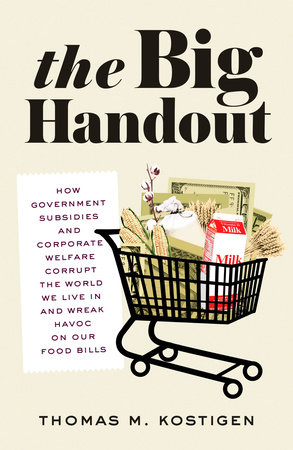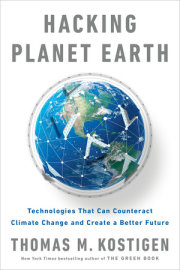CHAPTER ONE
THE GROCERY STORE
Forty-five thousand square feet. It's the average size of a grocery store in America and it's about the size of the one I am standing in front of on a sunny California day as I watch shoppers come and go. For context, 45,000 square feet is about 20 times the size of the average home in the United States.
An older, white-haired man in a red checkered shirt, jeans, and bright white sneakers pulls up in his beige Honda Accord and rushes inside. A pregnant woman in a black Range Rover shuts her door and a "chirp" from the SUV confirms she's locked it with her remote key. A Mexican man in a Chevy truck gets in and starts the engine, wolfing down a handful of chips (part of his lunch?) before taking off. A student--identifiable by her knapsack-- parks her bike. A family of four. Several older women. A mixed bag of men-- young, old, with kids and without. All park their mostly American-made cars and SUVs and walk inside. The 175-space lot is in constant flow, a stream of people just like you and me, coming and going.
This, my friends, is the most common meeting place in America for citizens like us. And it's a fake. It's a racket. You and I are its victims. We're getting conned out of the money we exchange for food at the cash register.
All that, like the rhythm of a popular song, continues without much thought to what's behind it--not the words, not the meaning.
Inside the grocery store this scenario I've sketched comes alive: In the produce section, Deep Blue Something's "Breakfast at Tiffany's" plays over the intercom system. The track is broken by the sound of fake thunder over the speakers. And then there is a spray of mist as the sprinklers keep the produce on the shelves wet.
A young woman in a workout outfit, basket in hand, takes a large package of Supreme sweet corn from the shelf. Its crooked black-and-white tag advertises "Special. $5.99." It's a four-cob pack.
The corn is wrapped in plastic. And the package is wet. Needless waste, of course. It's an apt metaphor for agricultural subsidies. Showering packaged vegetables is like the government subsidizing farmers to produce the vast amount of corn that is already grown in California. More incentives aren't needed.
I get approached by a store worker. I think he's going to hassle me for standing around taking notes and--admittedly--gawking at customers. But he only tries to push some peaches on me. "Forty-nine cents a £d," he says. "Today, last day of sale."
Over in the meat section there are things marked "Reduced for Quick Sale." Things like bologna and sausages and hot dogs and packaged pork in gravy find themselves relegated to this shelf.
"Save Big. Lunch Meat." It's another teaser.
A heavyset woman wearing a T-shirt and sweatpants walks by and grabs two packs of boneless chicken thigh fillets from the bin. They are priced at $1.99 a £d. It catches the attention of an older Asian woman. She reads the sign and takes two packs.
Chicken. Beef. Turkey. Pork. All for sale, on sale.
At the checkout counter the coupons are passed, the scanner beeps, club cards are handed over, and tiny paper receipts are handed back to customers as they leave, their carts--sometimes two each--now full of plastic bags, filled with all the fixings for meals yet to be served: breakfasts, lunches, dinners.
A man argues with a cashier about the price of something. If he only knew. If he only knew how that item was really priced and the factors that determine those digits displayed on shelves. He probably doesn't. Few dare go down that path of inquiry.
The average person in America spends about $120 per week on food. It's a number that has been climbing steadily and is expected to rise at an even faster rate as food costs soar.
From 1990 to 2008, the period for which the most recent government data are available, food expenditures rose close to 50 percent. You might think that's a lot. And it is, especially in the down economy the world is experiencing as this book goes to press. But the increase in the amount we spend on food in America is a crumb compared to the rise in global food prices.
Over a period of just two years--between 2006 and 2008--average world prices for the commodities that compose most of our diets more than doubled. Prices for rice rose by 217 percent, wheat by 136 percent, corn by 125 percent, and soybeans by 107 percent. You may recall the food riots that occurred around the world during this time. Indeed, some 40 riots broke out in Mexico, Haiti, Egypt, and other countries short of basic food items.
Subsidies aren't even doing their job of keeping prices down in America. Instead, they create perverse ways for food companies such as Archer Daniels Midland, Cargill, ConAgra, and Monsanto to profit wildly; savings aren't being passed along.
Think about that lady at the grocery store who reached for that package of Supreme sweet corn. Imagine her having to fight for it, the package ripping open, the four ears of corn tumbling to the ground. A scuffle forming and hands desperately pecking at one another trying to catch the scattering kernels. Or that woman in the sweatpants who took two packages of chicken thigh fillets for $1.99 each. No way she'd get away with it. Imagine fierce battles over the basics we need for survival. Food. Water. The staples of our existence. Low down on the food supply chain, in poor, developing countries, things are getting ugly.
Corn, rice, wheat, and soy are the grains that feed us. They are the feed for the animals we consume. They are the makings of our breads and cereals. And dairy products, of course, come from animals that eat grain. When the prices of these grains rise, the increases ripple through the rest of the food chain.
Moreover, myriad circumstances are challenging our food supply. Droughts and other severe weather events in grain-producing nations have crimped supplies. These droughts are expected to only worsen as the world's climate changes. In addition, rising oil prices have affected the costs of fertilizers, food transportation, and storage.
The floor for food prices keeps rising, and for some it's a step they can no longer afford to make. Roughly 1 billion people throughout the world live in a state of hunger. And these aren't just people in developing countries. One person in eight in America gets food from one of the more than 200 food banks of the country's largest hunger-relief charity alone.
You read that correctly. In the most affluent country in the world, people can't afford to eat. In many cases they go hungry. It doesn't make the headlines, but it should.
Much of the starvation around the world is, ironically, caused by subsidies. Food subsidies, designed to lower prices so people wouldn't starve, are now having the opposite effect.
Here's how: The US government subsidizes the production of certain foods (corn, soy, rice, etc.). We export that food at below-market costs to other countries. Poor countries' governments buy the cheap food subsidized by America to feed their hungry. The farmers in these countries cannot compete with these prices, so they go out of business and join the millions who can't afford to eat. Back at home, meanwhile, local farmers--real farmers, not the big agricultural corporations that get the bulk of government subsidy money and produce most of the agricultural output today--can't compete with these artificially low prices either, and many of them join the ranks of the unemployed and undernourished.
It gets worse, and even more complicated. Because we "dump" cheap food on the world market, some countries impose trade barriers and other policies that jack up the prices of their foods that we import. That, plus the currently low value of the US dollar around the world as compared to other currencies, makes the food we import more expensive. Bananas and coffee, which are virtually 100 percent imported, are especially prone to this type of price rise.
Across the economic spectrum, subsidies and protectionist trade policies put certain food items out of the reach of certain people. This makes the choices among basic necessities hard, very hard.
According to the 2010 Hunger in America report by the charitable organization Feeding America, of all hungry households in the United States almost half had to choose between paying for utilities or heating fuel and food, 39 percent said they had to choose between paying for rent or a mortgage and food, 34 percent reported having to choose between paying for medical bills and food, and 35 percent were forced to choose between transportation and food.
That's here in the United States, where food programs like Feeding America are available. Now think about a farmer in Uganda, a country where even with the cheap imports from the United States' food programs, they can't feed their poor. These unfair trade practices cause feelings toward the United States to become negative, sometimes even violent. It's why Secretary of Agriculture Tom Vilsack's role sometimes overlaps with that of Secretary of State Hillary Clinton's on matters of US foreign policy. But we'll get into that backlash later.
What's important to know is that higher food prices are being felt all over the world. So let's get back to the United States, where in 2007 the average household spent $777 on meats, poultry, fish, and eggs; $387 on dairy products; $600 on fruits and vegetables; and more than $1,241 on junk food and other items.
The grocery store, while a painful reminder of our increasingly stretched household budgets, is also the source of pains much bigger in scope: It's the gateway for so many of the world's problems. Indeed, behind the sign that hangs in front of your grocery store is one end of the many pathways that connect us to the world--the routes bananas trek from Panama, coffee takes from Columbia, tea travels from China, and fish voyage from the middle of the vast oceans.
Subsidies interrupt and corrupt what seems like a very basic system: growing goods and bringing them someplace to sell. The "market" that throughout time decided prices--("Hey, Lucius, my fellow Roman farmer. You are charging what for your grapes? I'll charge the same, too, per bunch.")-- has become infected with price distortions. ("Lucius, guess what? The government just said they will pay us to grow our grapes. Let's lower our prices and get some more business.")
The first supermarket didn't open in America until 1930. Rather than being just a local hub of commerce, it has grown to become a political and scientific outpost. It connects us to Washington, DC, where food policies are set, and to laboratories on university campuses the world over where researchers craft food "alternatives" and additives for our diets.
It's also the place that is most directly tied to our health and well- being. It's mostly responsible for where and how we get fat.
To take a page out of the book Eat This, Not That! 2010:
In the early 1970s, food manufacturers, looking for a cheaper ingredient to replace sugar, came up with a substance called high-fructose corn syrup (HFCS). Today, HFCS is in an unbelievable array of foods--everything from breakfast cereals to bread, from ketchup to pasta sauce, from juice drinks to iced teas. (Indeed, just try going to your local convenience store and buying a drink that doesn't contain HFCS!) According to the FDA, the average American consumes 82 grams of added sugars every day, which contribute 317 empty calories to our daily diet. HFCS might not be any worse for our bodies than normal table sugar, but its dirt-cheap cost and prevalence in processed foods has only served to intensify America's collective sweet tooth in recent years.
In short, it works like this: Government subsidizes corn. It becomes so cheap that HFCS can be made super-inexpensively. It gets added to all sorts of items to make them "sweeter" ... and we gain weight.
Obesity is a big issue. But as I said, it's only one problem that subsidies promulgate and our grocery store connects us to. Another big issue that subsidies connect us to is debt. They make us poorer.
In America, we spend about $200 billion per year--more than $1,500 per household--on corporate welfare and farm subsidies. We actually pay farmers some $2 billion a year not to farm.
As it stands the federal government was projected in 2010 to spend $30,543 per household and collect taxes of $17,879 per household, resulting in a budget deficit of $12,664 per household, or $1.5 trillion. It means that for the first time in US history we'll be a 100 percent debtor nation, making less money than we owe with our deficit exceeding our gross domestic product. Subsidies add to that bill.
These are statistics that should be laid at the feet of Senator Debbie Stabenow, the Democrat from Michigan who chairs the Senate Committee on Agriculture, Nutrition, and Forestry, and Congressman Frank Lucas, a Republican from Oklahoma who chairs the House Committee on Agriculture.
But most people are too busy worrying about paying for their food and don't have the time to call and raise a stink with their elected representatives.
So back to the grocery store and your own weekly or monthly food bill: Add to that tally all the taxes we are paying to subsidize farmers and you'll find that we as individuals and families have even bigger food tabs to pay. It equates to thousands of dollars more per year.
Yet, what if I told you that over the long term, ending subsidies would actually lower food prices? After the immediate spike in prices we might experience after doing away with subsidies, costs would gradually fall as more international markets were opened to us. Many jobs, too, would arguably be more secure and even increase in number because they wouldn't be based on false premises and government underwriting.
We historically have paid more than double the world price for sugar because of protectionist trade policies that keep import tariffs high to keep cheaper products from being imported. We also pay higher prices for milk, butter, and cheese because of federal policy on the domestic and international fronts.
Sure, we might initially pay a lot more for a hamburger without subsidies-- if we relied solely on domestic feed and cattle. But remove trade restrictions and on the world market the price of that hamburger would fall below what we pay now--and our cattle ranchers would have a bigger market to serve, too. Protectionist trade policies also drive up prices for peanuts, orange juice, canned tuna, and other products.
As three Cato Institute directors put it in an article addressing this issue titled "Six Reasons to Kill Farm Subsidies and Trade Barriers" in the libertarian magazine Reason, "If American farm subsidies and trade barriers were significantly reduced, millions of American households would enjoy higher real incomes." Less tax equals more income, if the savings are passed along to us.
Copyright © 2011 by Thomas M. Kostigen. All rights reserved. No part of this excerpt may be reproduced or reprinted without permission in writing from the publisher.






